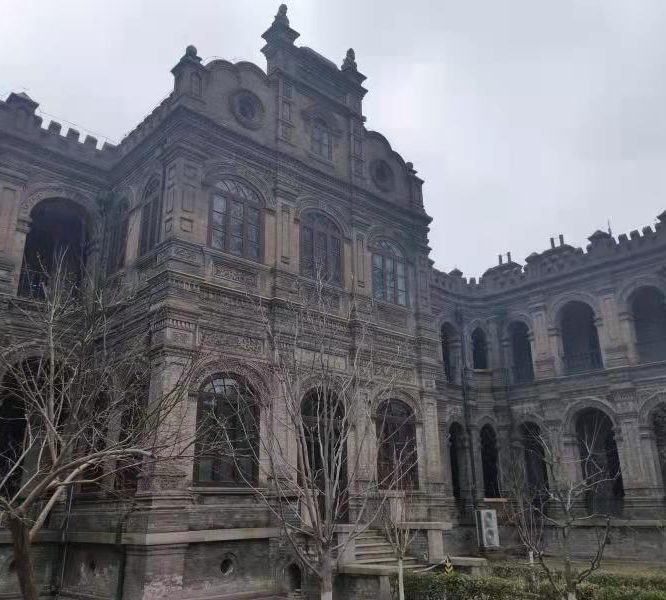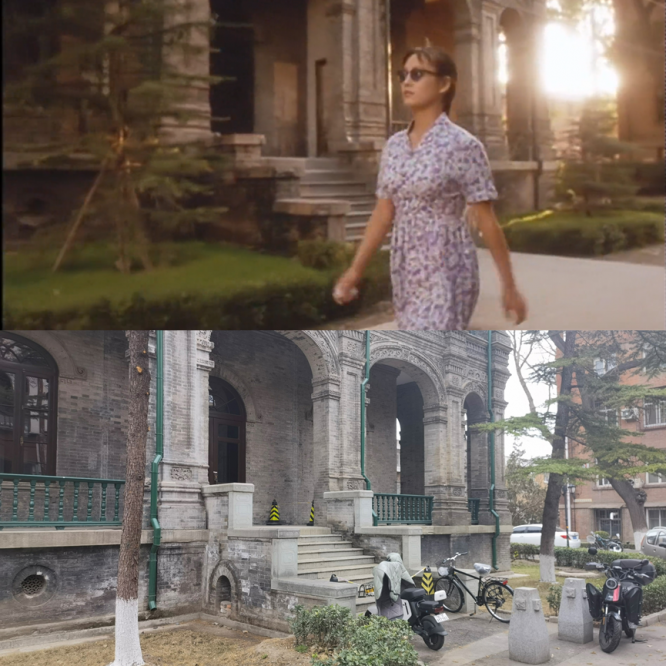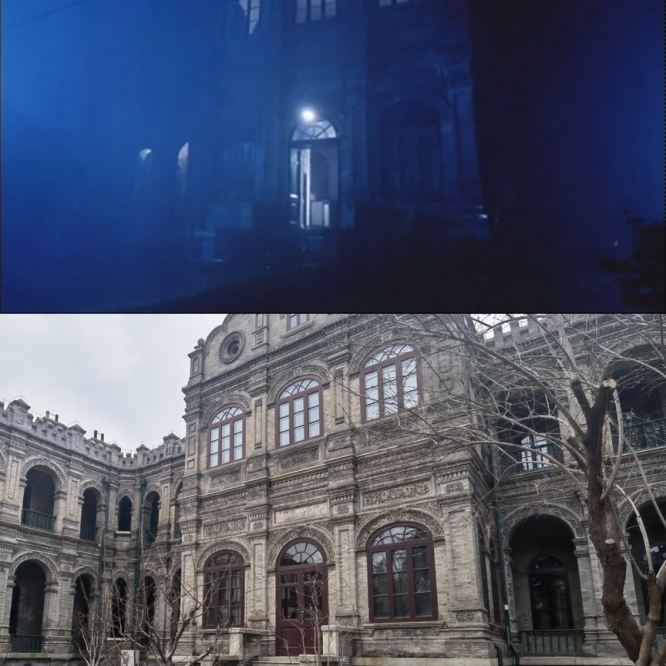IN THE HEAT OF THE SUN, DIR. JIANG WEN (1995)
The Former Site of Duan Qirui’s Government, Dong Cheng District, Beijing

The Former Site of Duan Qirui’s Government from outside.
In the Heat of the Sun, made by Jiang Wen, was released in 1995. The movie retells a man’s (Ma Xiaojun) childhood memories during the Cultural Revolution. He falls in love with a girl (Mi Lan) but is not brave enough to tell her his feelings. The director combines actual memories with the boy’s fantasy to challenge the spectators which part is real. By constantly differentiating reality and fantasy, the movie brings the audience back to the good old days when everyone half-understood love and romance in their teenage years.The most featured architecture in the film is Mi Lan’s house. In reality, it used to be the government office of Duan Qirui1. The building is a combination of European-style and traditional Chinese culture.2 Its complex design, which is rarely seen in reality, gives a mysterious and unreal feeling which is complemented by the unknown background of the heroine –Mi Lan.
The building’s most significant difference between film and reality is the use of Chiaroscuro. Under natural light, the architecture is dim and old, giving out a sense of history. However, in most parts of the film, the director increases the brightness of sunlight, the whole building is wrapped in strong light, and the audience can not see the blue sky clearly. Surrounded by the light, the building gives a new warm and dreamy feeling, just like being immersed in one’s memories. Apart from the light, the change of color makes the architecture a better place for characters to show their feelings. In reality, the masonry structure shows a grey and white color. However, the movie increases the saturation in many senses. When focusing on Mi Lan’s daily life, the building is covered in a warm style yellow color, which is complemented by the strong sunlight. We can feel the joyful atmosphere surrounding the character. When Ma Xiaojun returns to Mi Lan’s house to confess his love to her, the cold color style with pure blue full of the image gives a strong feeling of depression and uncertainty.
The sunlight is a clue throughout the whole movie. Just like the movie title: In the Heat of the Sun, the strong sunlight represents summer, which is the beginning of vitality, desire, and sexual drive. The old architecture (Mi Lan’s house) is where Ma Xiaojun spends his whole day waiting for Mi Lan and making up his romantic fantasies. Therefore the use of strong light on the architecture reveals Ma, as a 16-year-old teenager, has his ambiguous desire for romance and Mi Lan. The dreamy feelings caused by the light also showed that everything that happened was unreal, just in Ma’s imagination. Apart from the Chiaroscuro, the bright color makes Mi Lan, the main character, more fleshed out. Mi Lan is a girl with a mysterious background and a lively personality. As the house for Mi Lan, the building shares the same feature with the character. The increase in saturation successfully reduces the heaviness of this old architecture and makes a perfect balance between the sense of mystery and vitality. Therefore we can know Mi Lan, who created Ma’s fantasy, better from her environment (The architecture).
— Ronghan Lin 3035845980


- Left-up: Mi Lan walked through the yard and went back home. Scenes from In the Heat of the Sun, 1995, directed by Jiang Wen.
- Left-down: Recent The Former Site of Duan Qirui’s Government from outside, compared with the left-up picture
- Right-up: The rainy night when Ma Xiaojun came to find Mi Lan. Scenes from In the Heat of the Sun, 1995, directed by Jiang Wen.
- Right-down: Recent The Former Site of Duan Qirui’s Government from the back, compared with the left-up picture.
Notes:
1 Duan Qirui was a warlord during the era of the Republic of China. He was a commander of the Beiyang Army.
2 The main building’s exterior corridor is a typical Victorian style, with exquisite arches and verandas. However, the main bell tower, which is directly opposite to the door, shows a clear Gothic style. On the rainy day, it does not have a gloomy Gothic beauty. Looking at the details of the decoration, it is a fusion of Baroque and ancient Chinese traditional patterns (Zhang 2016).
Zhang, Aiyi. 2016. “探秘北京老建筑:段祺瑞执政府的兴衰往事”. 北京晚报【微博】. https://cul.qq.com/a/20160707/026168.htm.
You made several meaningful comparisons between the space in reality and in the film. You also attempted to link them to the film’s story and effect. The exploration of light and colour is particularly interesting. Did you take the photos yourself? They are good matches with the selected film stills. I am also curious what the building is used for now.
Yes, I took those pictures by myself. Actually, this building now is inside a university workplace and is for no use. There are many people coming and taking pictures but we can not go into the building.